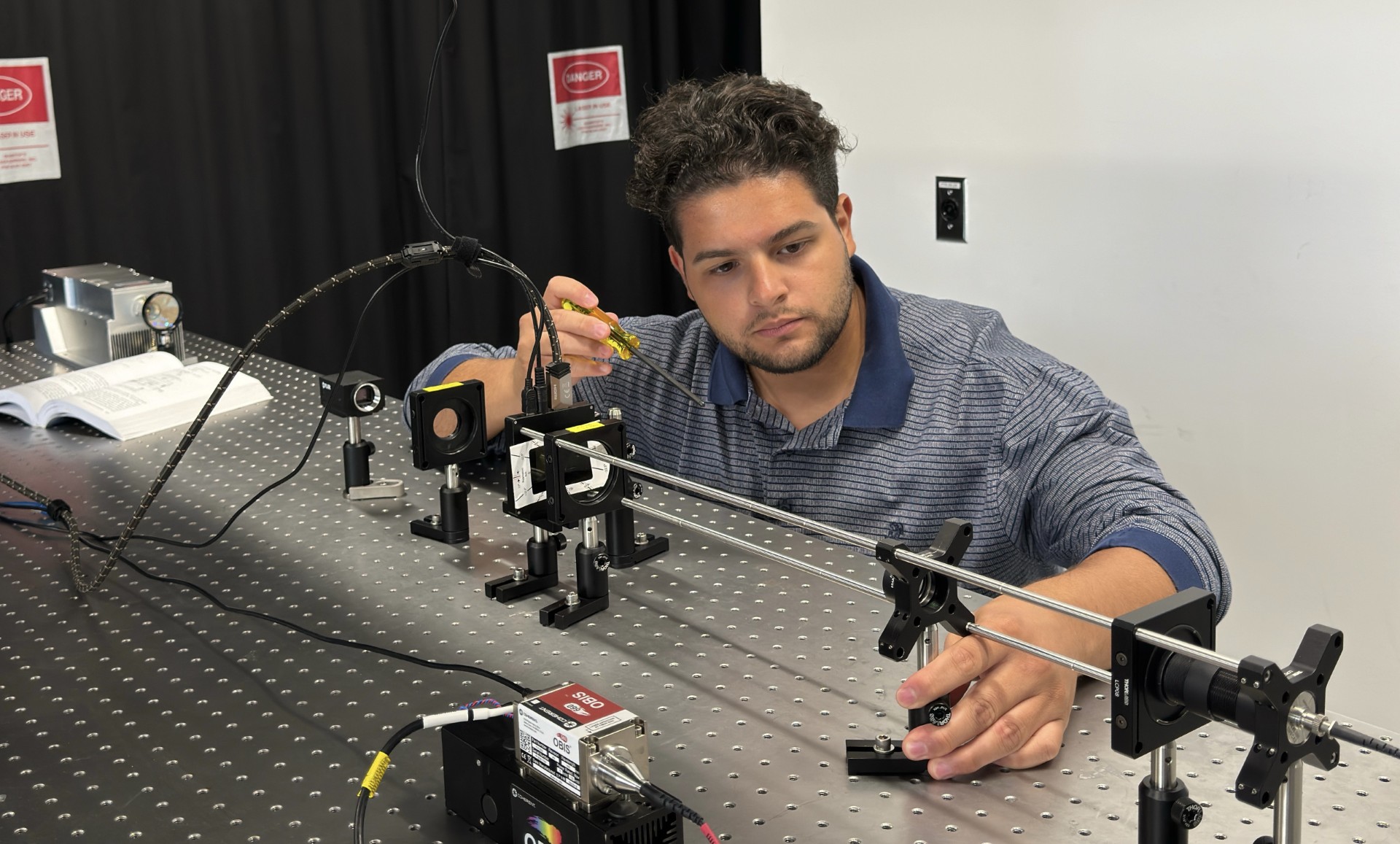From Sci-Fi Fan to Science Researcher, This APS Student is Illuminating the Brain’s Secrets
As a boy in Boston, Jovan Tormes-Vaquerano, a Ph.D. student in materials science in the department of applied physical sciences, enjoyed reading Ray Bradbury and watching Star Wars in the comfort of his bedroom. But it wasn’t until a middle-school field trip at the Koch Institute for Integrative Cancer Research at MIT that science, not the fictional kind, became life-changing.
“I remember being fascinated by all the jars of chemicals on the shelves, seeing E. coli and other cells under a microscope for the first time,” said Tormes-Vaquerano. “In Boston, science was all around you, from public libraries to science museums. My immigrant parents and grandparents realized that Boston was an amazing place to live because there’s so much culture and access to education.”
After obtaining an undergraduate degree in electrical engineering from UMass Boston, Tormes-Vaquerano found at UNC-Chapel Hill a sense of community and academic excellence similar to what he experienced in Boston. As a member of the Pégard and Rodriguez-Romaguera labs, he is pursuing a line of research at the intersection of several scientific disciplines influencing the study of neural networks, merging optogenetics with other optical engineering, electrical engineering, computer science and neuroscience techniques.
Optogenetics involves the genetic modification of neurons to express light-sensitive proteins called opsins, originally found in microorganisms such as algae. These proteins allow neurons to respond to light, a capability they do not naturally possess. This method enables researchers in the Pégard and Rodriguez-Romaguera labs to control neuronal activity with light, providing unprecedented precision and speed compared to traditional methods, such as chemical or electrical stimulation.
“Light is the ultimate form of electromagnetic radiation,” said Tormes-Vaquerano. “Unlike chemical reactions, light travels at 186,000 miles per second—the fastest speed in the universe. This property makes optical manipulation an incredibly powerful tool for studying and understanding biological systems.”
One of the interesting aspects of using light in biological research is the ability to finely tune its properties. Tormes-Vaquerano highlights how specific wavelengths of laser light, such as blue light at 450 nanometers or red light at 660 nanometers, can be used to selectively activate genetically modified neurons. This specificity allows for highly targeted experiments, crucial for studying complex neural networks.
Moreover, controlling light’s direction and intensity through advanced optical systems—using lenses, mirrors and filters—offers a level of control that is challenging to achieve with electrical signals. This precision reduces the risk associated with electrical systems, where excessive stimulation can lead to neuronal damage.
Tormes-Vaquerano’s first year in graduate school was a crash course in optics, a field he had not deeply explored during his undergraduate studies. Guided by his advisor, Nico Pégard, an APS assistant professor and an optical engineer turned neuroscientist, Tormes-Vaquerano delved into the complexities of manipulating light for biological research. This learning curve, though steep, was essential for his work in optogenetics.
One typical experiment being conducted in the Pégard and Rodriguez-Romaguera labs involves targeting neurons associated with stress or anxiety. By injecting opsins into specific brain regions and waiting for their expression, the researchers are using light to activate these neurons. This technique enables the study of neural responses and behaviors, such as anxiety in mice, by observing changes in respiration rate, pupil size and movement.
One significant challenge in optogenetics is avoiding off-target effects, where unintended neurons expressing the opsin are activated. Traditional methods of flooding brain regions with light are imprecise. To address this, Tormes-Vaquerano and his colleagues use spatial light modulators to generate holograms. These dynamic optical devices use liquid crystals or small mirrors to modulate light waves in space and time, allowing them to direct light with high precision across two or even three dimensions. This targeted approach minimizes unintended activations and enhances the accuracy of their experiments.
“By manipulating light to understand and influence brain function,” he said, “we hope to develop new tools and techniques that pave the way for future breakthroughs in treating neurological conditions.”
June 25, 2024
Jovan Tormes-Vaquerano, a Ph.D. student in materials science, captures images of holograms with a digital camera.

